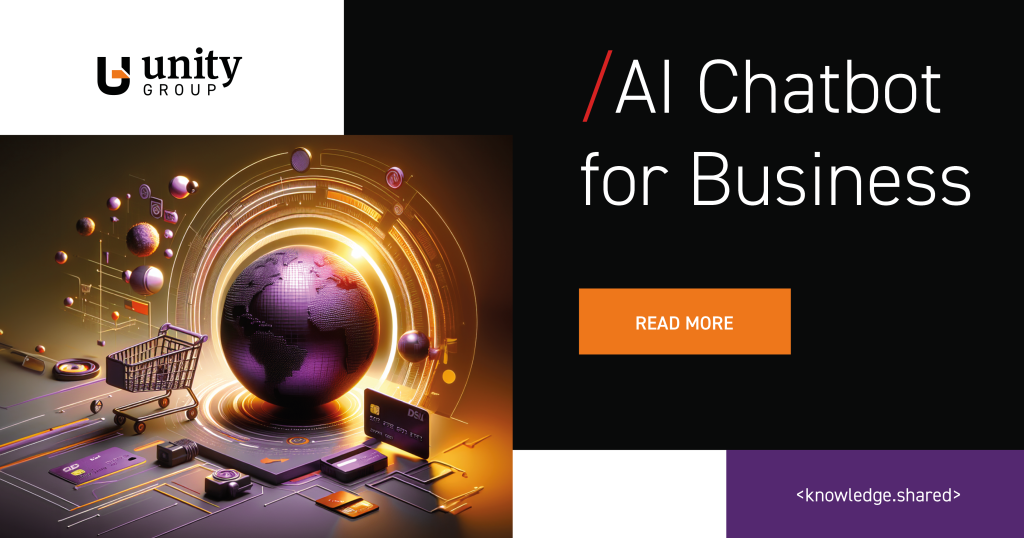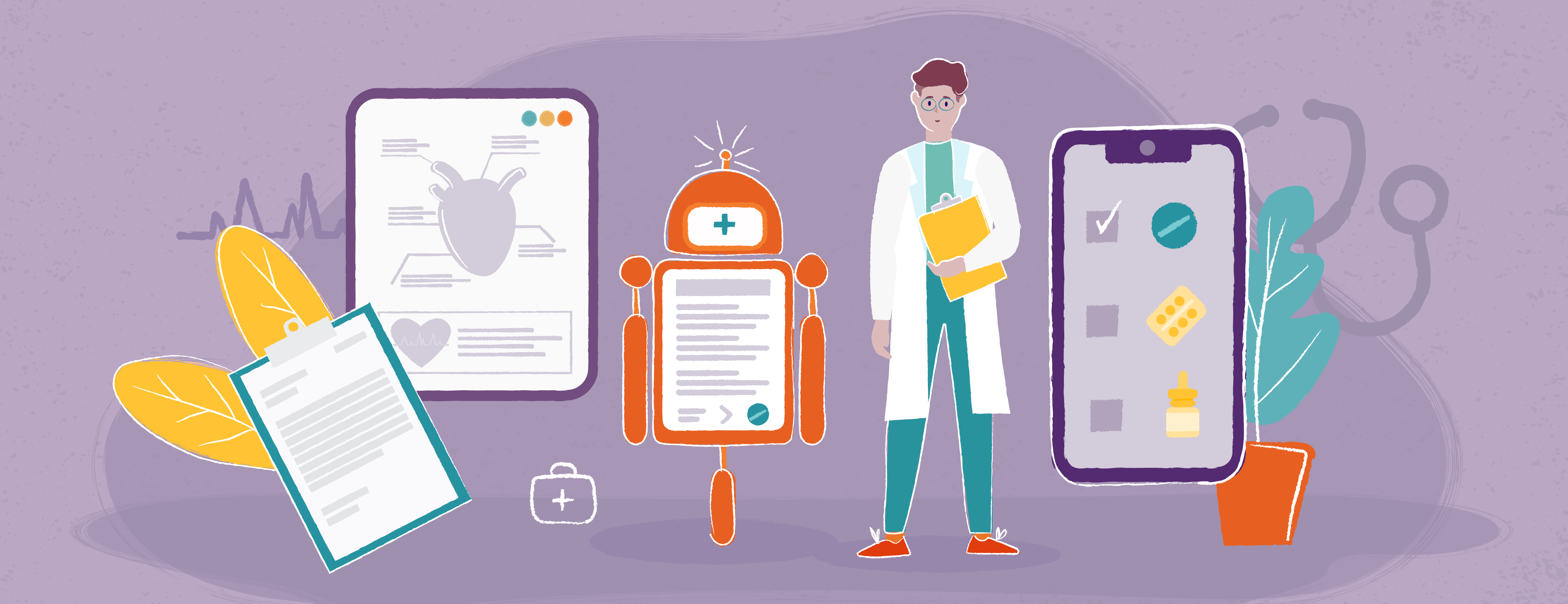Medical AI / Examples of AI in Healthcare That Will Blow Your Mind
After 3 years of searching and visiting over a dozen doctors, a frustrated mother finally turns to ChatGPT to find the cause of her child’s pain. The woman enters information about the boy’s condition and adds data from test results. ChatGPT suggests a rare neurological condition – spinal cord anchorage syndrome. The doctor then confirms this diagnosis.
Frightening news for some, exciting for others. Will this be the future of health care? What are the prospects for the development of AI in the medical field?
Healthcare is Undergoing a Digital Transformation
The above story, while true, is only one of the many technological aspects revolutionizing the health sector. Digital transformation is already occurring across the medical sector, helping to improve processes and better diagnose patients. This evolution is related to both the constantly developing online world and changing patient expectations for health outcomes.
Electronic health records, telemedicine and even e-commerce platforms are becoming more and more common for medical companies. Patients willingly use the facilities offered by modern technologies. For example, around 40% of patients still wish to continue using telemedicine since the pandemic.
The digital transformation of healthcare is a fact, but there is still much more ahead of us! Modern medicine is increasingly bold in its use of new solutions, ranging from medical AI to other advanced technologies and precision medicine. In a moment, we will show you the more interesting examples of artificial intelligence in healthcare.

Faster DNA Sequencing and Analysis of Genomes Across Ethnic Groups
The development of AI medical technologies is enabling increasingly faster and more accurate DNA sequencing and genome analysis. The raw data from a single person’s genome sequence is approximately 100 terabytes in size. Using medical AI can make the process of analyzing such data up to 100 times faster than when performed by humans alone.
This abundant potential of AI in the medical field is inspiring researchers to conduct new projects in the area of genetic research. One of the latest projects announced is an initiative that aims to sequence the genomes of half a million people of African descent to counter the underrepresentation (0.5% in the world) of this group in genetic research.
The lack of representation means that disease-causing mutations unique to this group are simply unknown. Similarly, the tools for predicting risk of disease and/or even treating patients that were originally developed using data from people of European descent may not work as well in patients of African descent.
AI in Medical Diagnosis
Until recently, the utilization of AI in how medical professionals diagnose procedures remained exclusively in works of fiction. Today, however, we live in a reality in which modern technologies can provide AI medical diagnosis support for partitioning doctors.
Self-diagnosing with “Doctor Google” is extremely popular (though not always wise), and although you can find a lot of valuable information about various diseases on the Internet, nothing can replace the expertise of a doctor. AI for medical diagnosis fills a role between the doctor’s expertise and these self-diagnosis procedures.
One example is the self-diagnosis of vision defects such as myopia, hyperopia or astigmatism. Visibly is an example of an organization that conducts such tests online and is approved by the US Food and Drug Administration (FDA). The advantage of conducting the test yourself lies not only in the convenience, but also in its speed and ability to provide access for people who do not have an ophthalmologist nearby. However, as experts emphasize, such tests should be treated as an additional or preliminary assessment of vision conditions. They should not – and can not – replace a professional eye examination in a doctor’s office and they similarly will not be able to detect other potential eye diseases.
Another example of AI systems can be found with chatbots based on LLM (Large Language Models), which can provide another support channel for AI in medical diagnosis. We’ve already given one example – a woman using ChatGPT to diagnose a rare disease in her son, which several doctors of various specializations failed to do. Chatbots built on AI represent some very promising AI examples of AI technology in healthcare. However, we cannot forget about issues such as privacy, security and the principle of limited trust in the results presented by chatbots.

Of course, there are even more AI medical diagnosis examples and use cases, such as AI medical imaging for detecting the likes of cancer, heart defects, strokes and other anomalies that are difficult to detect with the human eye.
AI medical diagnosis is constantly developing and promises even better diagnosis results and processes for patients. Of course, at this point, it is still the doctor who is legally obliged to make the final decision regarding both the diagnosis and the prescribed treatments or therapies, and this will probably not change any time soon.
Supply Chain Optimization in the Healthcare Industry With AI
Experts believe that, by implementing AI in the medical field, companies can relieve some of the challenges of healthcare supply chains, including demand forecasting, inventory management and distribution optimization.
AI can analyze vast amounts of data to more accurately predict demand, thereby helping healthcare providers maintain optimal inventory levels and reduce drug waste. Thanks to the use of artificial intelligence, supply chains can be better adapted to unforeseen events, such as epidemics, when the demand for specific drugs and medical products increases.
However, for such systems to work, cooperation between technology providers, healthcare organizations and supply chain experts is necessary. When combined, these solutions can be assuredly tailored to the unique needs of the healthcare industry.
Robots for Advanced Surgery and… Teleoperation.
As medical and surgical procedures continue to develop, so too does the complexity of corresponding surgery. Advanced robotics can be utilized during surgery to potentially eliminate the threat posed by the involuntary movement of surgeon’s hands during operations that require great precision. A particular challenge occurs, for example, when suturing skin tissue.
Dr. Alan Kuntz and colleagues from the University of Utah decided to fill this gap with medical AI, presenting an autonomous robot that can precisely guide a needle through living tissue. Their robot moved around a pig’s lung without causing any damage. The team used a highly flexible, laser-controlled needle for this purpose. While most needles are stiff, Dr. Kuntz’s robotic needle is ideal for traversing the curved paths common in surgical settings, minimizing the risk of damage to nearby tissues.
When it comes to such AI in healthcare examples, we can also find another example in teleoperations. In October 2023, scientists from Japan and Singapore successfully tested this possibility. A surgical team from the latter country successfully performed a remote gastrectomy on a simulated stomach located in the former. The procedure worked, despite the operating team being over 5,000 km (3,106 miles) away.
Next-Gen Wearable Devices
Wearable devices monitoring various health parameters can help both doctors and chronically ill patients.
Pfizer, for example, actively develops useful tools and technologies under the Pfizer Digital Companion umbrella. These tools help doctors manage patients with various diseases, such as atopic dermatitis. The company’s wearable devices track how often patients scratch, providing real-time data that the patient no longer needs to record or collect themselves. Thanks to such a device, it’s also possible to monitor such symptoms whilst the user is asleep.
Alternatively, we can also look at e3-skin, developed in Japan. These devices resemble skin and can be easily placed on the body. The system measures important body parameters through the use of biochemical sensors that enable data collection at a molecular level. When combined with biophysical sensors, the system can provide more comprehensive information about an individual’s health. The data is then processed and analyzed by medical AI, which provides various predictions about the individual’s health condition.
Platforms That Use Medical AI to Streamline Processes
The largest cloud providers are launching their own AI medical solutions for the industry.
Google Cloud, for example, is developing Vertex AI Search, an engine that enables organizations to quickly create search engines based on Generative AI. Recent updates to this tool provide new feeatures designed specifically for the healthcare industry, making it easier to search patient records and health data from various sources and draw conclusions from them,
Amazon Web Services, in turn, has launched AWS HealthScribe which enables healthcare software providers to create applications that enable notetaking, transcription and the analysis of conversations between patients and doctors. For example, the system can create notes based on a conversation with a doctor, highlighting the reason for the visit, the patient’s medical information and the recommendations from the consultation. The doctor, of course, can review the notes before entering them into the Electronic Health Record system.
Discovering New Drugs
When it comes to AI in the medical field, use cases are also emerging in the field of drug development and discovery. Machine learning has been present in chemical informatics for years. Initially, it was used to predict the various properties of potential drug candidates. Today, even more advanced algorithms help in the development of targeted drugs or new chemical synthesis routes.
This advanced medical AI technology supports the discovery of new antibiotics, which is extremely important today due to the increasing threat of drug-resistant bacteria. Identifying even one promising antibiotic candidate requires the analysis of hundreds of molecules, which is extremely time-consuming without automation tools.
However, the ability to computationally predict the properties and activities of new molecules using artificial intelligence could save scientists time, money and resources that would otherwise be wasted on testing compounds that would turn out to have little or no value.
The effects of these actions are already bringing results. In 2020, researchers from MIT (Massachusetts Institute of Technology) discovered new, strong antibiotics, which may provide a solution for problems caused by the most problematic bacteria.
Epidemic Predictions
Scientists are experimenting with different medical AI models to predict the spread of diseases. As far as AI in healthcare examples go, this is a new field that is still developing, but the results so far look promising, and it’s likely that more accurate models will be created in the future.
As an interesting example of a use case for such AI in the medical field, we can look at a model for predicting the spread of influenza. This can include public queries related to this disease, as entered into Google’s search engine. For greater accuracy, the model also uses data from clinics alongside public weather data. Such predictions are extremely helpful for the sector. Thanks to advanced notice from such medical AI tools, clinics can prepare for the upcoming “siege” of patients, while pharmacies can adjust drug orders accordingly.
Digital Twins – Creating the Digital Patient
The Digital Twin concept involves creating a virtual reflection of physical objects, processes or even systems, in order to conduct simulations before the actual creation and implementation of appropriate solutions.
Such Digital Twin technology in the healthcare sector can help realize the vision of personalized medicine and individually tailored treatments. It enables healthcare professionals to simulate the effects of, for instance, drug dosages before prescribing actual treatment, helping to determine if specific therapies are appropriate for a given patient.
For example, imagine a virtual model of the human circulatory system that is calibrated for each patient to predict potential complications after surgery. Other examples include a Digital Twin that enables the personalization of insulin pump therapy, or a model that converts heart scans into digital replicas to determine the best treatments.
AI in the Medical Field Is Already Helping Patients
These are just a few examples of AI technology in healthcare… but make no mistake. Although futuristic, many of these medical AI solutions are already enabling patients to receive better and more tailored treatments. Everything indicates that medical AI development will continue, and we can only hope that as many patients and companies from the health industry as possible will benefit.








